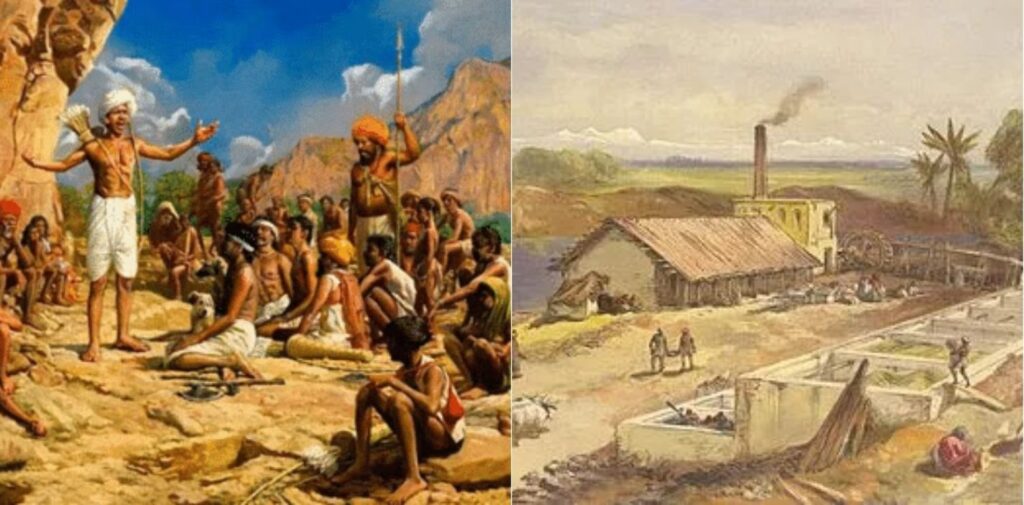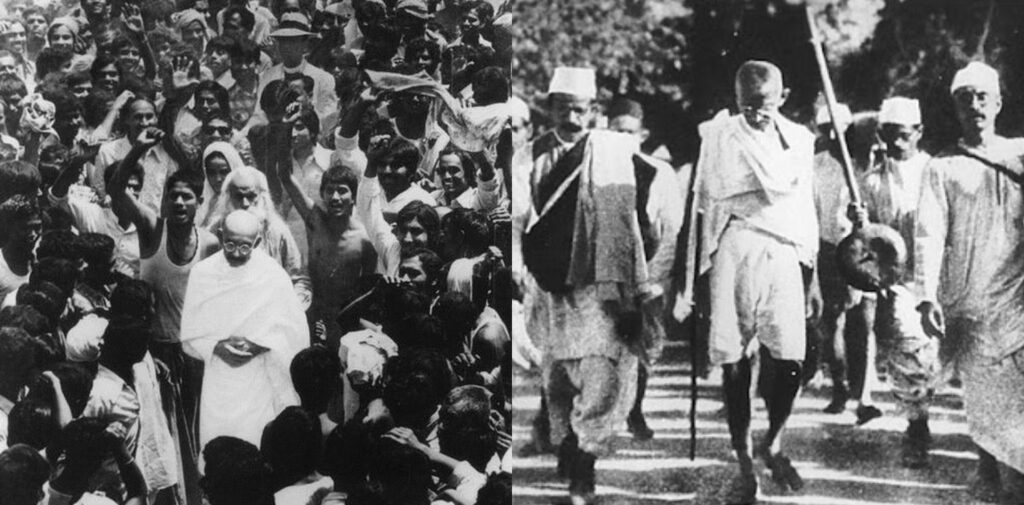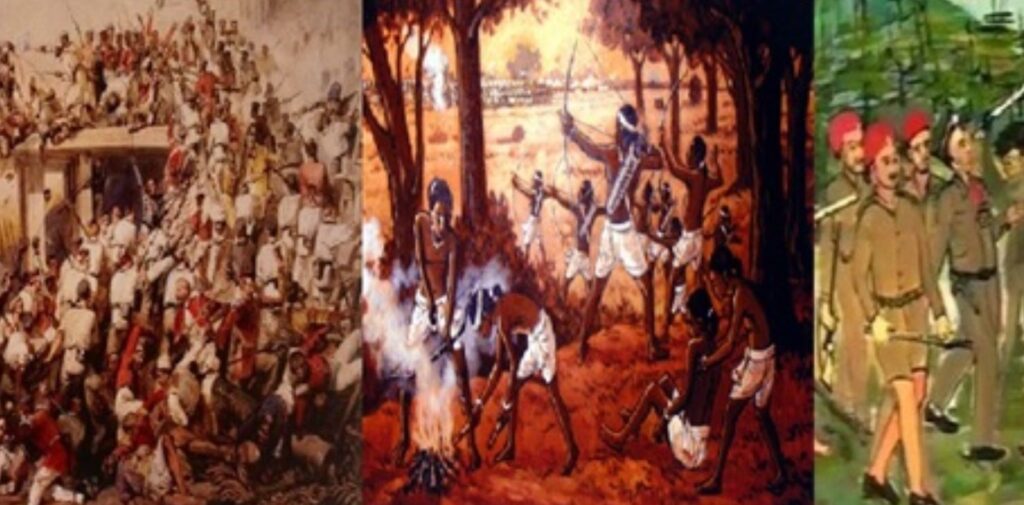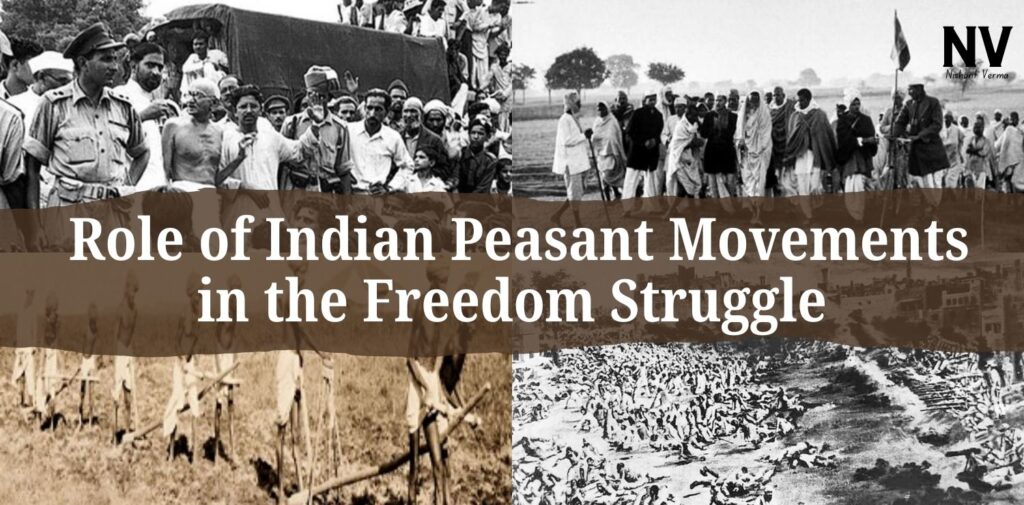India’s fight for independence was not only led by political leaders, intellectuals, and urban elites. The peasants, who made up the majority of the Indian population, played a crucial role in the freedom struggle. Their movements, born out of the severe exploitation and oppression they faced under British colonial rule, were a significant part of India’s fight for freedom. These peasant movements were not only about resisting the British but also about securing justice for the oppressed rural population. By the early 20th century, the Indian peasant movements became a vital part of the broader national movement for independence.
1. The Plight of the Indian Peasants Under British Rule
The majority of Indians in the 19th and early 20th centuries were peasants, dependent on agriculture for their livelihood. The British colonial policies, however, were designed to benefit the British economy at the expense of the Indian population. The peasants were forced to pay high land taxes, often higher than what they could afford. They had to pay these taxes even if their crops failed due to floods or droughts. The British also introduced various exploitative systems, such as the Permanent Settlement and Ryotwari System, which made it difficult for peasants to own land or improve their living conditions.
Additionally, many peasants were subjected to forced labor and were made to grow cash crops like indigo and opium, which were not for local consumption but were exported to meet British demands. These policies led to widespread poverty, suffering, and hardship for Indian peasants.

2. Early Peasant Movements
The peasant movements in India didn’t begin with the Indian National Congress or major nationalist leaders but emerged much earlier. These movements were driven by the dire economic conditions faced by farmers and their desire to get justice from both the British government and local landlords.
The Bihar Peasant Movement (1780s)
One of the earliest peasant revolts was the Bihar Peasant Movement in the 1780s. It was a response to the heavy land taxes imposed by the British in the region. The peasants, led by local leaders, protested against the exploitation by the British and the landlords who were their agents. Although the movement was crushed by the British, it was an early sign of the growing discontent among the rural population.
The Indigo Rebellion (1859-1860)
The Indigo Rebellion in Bengal in 1859-1860 marked one of the most significant peasant uprisings during the early colonial period. Peasants in the region were forced to grow indigo for the British and were given little compensation. They were also subjected to exploitative conditions and had no power to resist. The rebellion, led by local leaders like Digambar Biswas, was a direct challenge to the British planters and their oppressive policies. The peasants refused to grow indigo and demanded better treatment. Though the British crushed the rebellion, it marked a crucial moment in the history of peasant resistance and was one of the earliest examples of organized rural resistance to colonial rule.
3. The Rise of Peasant Movements in the 20th Century
As British exploitation deepened and more land policies became oppressive, peasant movements gained momentum in the 20th century. These movements were not just about economic relief but also about asserting the rights of peasants against both the British and the local feudal system. Many of these movements became part of the larger Indian freedom struggle.
The Champaran Satyagraha (1917)
One of the most famous and successful peasant movements in India was the Champaran Satyagraha in 1917, led by Mahatma Gandhi. This was Gandhi’s first major involvement in the Indian freedom struggle, and it became a turning point in the peasant movement. In Champaran, in Bihar, the peasants were forced to grow indigo under exploitative conditions for British planters. They were paid poorly and had no way to improve their conditions.
Gandhi, using his method of non-violent civil disobedience, organized the peasants and led a movement that ultimately forced the British to review their policies. The success of the Champaran Satyagraha inspired many more peasants to take part in the freedom struggle and gave a boost to Gandhi’s leadership in India. It showed that organized, peaceful resistance could bring about significant change.
The Kheda Satyagraha (1918)
Another significant peasant movement led by Gandhi was the Kheda Satyagraha in Gujarat in 1918. Peasants in Kheda were struggling with high land taxes, especially during a time of famine. The peasants, led by Gandhi and his followers, refused to pay the taxes, demanding a reduction in rates. The movement spread rapidly across Gujarat and even won support from the urban population.
The Kheda Satyagraha was successful in securing a reduction of taxes for the peasants, and it solidified Gandhi’s reputation as a leader of the masses. This movement was another example of how the peasant struggles were directly linked to the broader Indian freedom struggle, as Gandhi’s tactics of non-violent resistance became more widely adopted.

4. The Role of Peasant Movements in Regional Uprisings
In addition to these famous national movements, many peasant uprisings took place in various parts of India that played an important role in shaping the broader freedom struggle.
The Bardoli Satyagraha (1928)
The Bardoli Satyagraha in Gujarat in 1928 is another landmark in the history of peasant movements. The peasants in Bardoli were subjected to an unjust land tax increase. Under the leadership of Sardar Vallabhbhai Patel, the peasants of Bardoli launched a non-violent protest, refusing to pay the new tax. The movement was successful, and the government was forced to reverse the tax hike. The success of the Bardoli Satyagraha made Sardar Patel a national figure and earned him the title of the “Sardar” or leader. This was another example of how peasant struggles contributed to the growth of India’s nationalist movement.
The Telangana Peasant Movement (1946-1951)
The Telangana Peasant Movement was a significant uprising in the princely state of Hyderabad. The peasants in Telangana were heavily exploited by the landlords and were subjected to oppressive practices such as forced labor. The movement, led by the Communist Party of India, gained momentum in the 1940s and sought to address these issues. The Telangana Peasant Movement was part of the larger resistance against feudalism and was also connected to the broader struggle for Indian independence.

5. Peasants and Their Impact on Indian Nationalism
Peasant movements in India played a significant role in shaping the nation’s struggle for freedom. These movements were crucial for several reasons:
- Widespread Support: Peasants made up the majority of India’s population, and their movements mobilized large sections of the rural population. These movements, like the Champaran and Kheda Satyagrahas, helped spread nationalist ideas and brought many rural people into the larger freedom struggle.
- Strengthening Gandhi’s Leadership: Gandhi’s success in leading peasant movements helped solidify his position as the leader of the Indian independence movement. His ability to unite peasants under the banner of non-violence played a crucial role in the success of the independence struggle.
- Highlighting Colonial Exploitation: Peasant movements brought attention to the exploitative colonial policies and feudal structures that oppressed the rural population. These movements revealed the deep-rooted social and economic injustices that were central to the freedom struggle.
Conclusion: Indian Peasant Movements
The Indian peasant movements were crucial to the success of India’s independence struggle. The peasants, through their resilience, non-violent resistance, and organized movements, played an instrumental role in challenging British colonial rule. From the early rebellions like the Indigo Revolt to the successful Satyagrahas led by leaders like Gandhi, peasant struggles became an integral part of India’s fight for freedom. These movements not only helped in achieving political independence but also highlighted the deep-seated social injustices that needed to be addressed for a truly free and just India. The contribution of the Indian peasants remains a key chapter in the history of India’s struggle for independence.




